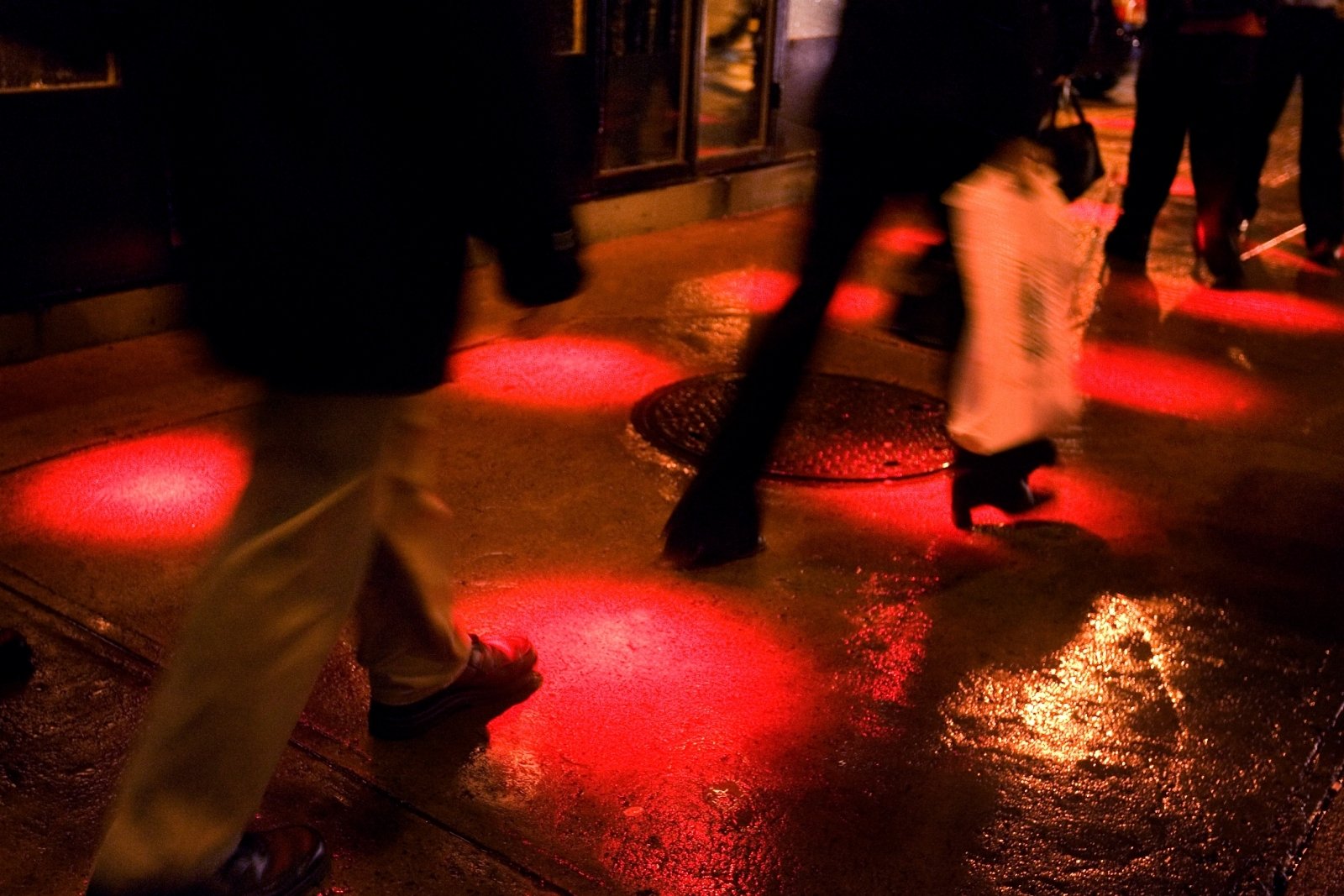
February 5, 2014
Montreal Sees the Light at Quartier Des Spectacles
How art, light, and digital technology turned a run-down neighborhood into a tourist attraction.
Dynamic, light filled environments can be positive and powerful forces of urban renewal. They enliven our public spaces, increase activities, and create economic growth in the process. I am not talking about digital advertising billboards. I am not talking about random visual clutter sprinkled across the urban landscape. And I am not talking about Times Square—successful as it is. I am referring to the Luminous Pathway in Montreal’s Quartier Des Spectacles!
For years cities have explored ways to leverage the arts and culture to increase economic success in their communities. Now we’re also asking, how can a city or district nurture and encourage creativity and artists?
While searching for completed examples of a partnership of lights, economic development, and the arts to include in the Dynamic Digital Environments Master Class at this year’s Digital Signage Expo, held at the Sands, on February 11 in Las Vegas, I discovered Montreal’s Quartier des Spectacles, and the Luminous Pathway! Immediately I called Mikaël Charpin, Luminous Pathway manager for the Quartier des Spectacles and found his insights informative, invigorating, imaginative, and practical. So I asked him to share his experiences with the audience in the Digital Signage Expo, Dynamic Digital Environments-Master Class in Las Vegas. What follows are some excerpts from our conversation.
Leslie Gallery-Dilworth: In only ten years, the Quartier has been able to provide a showcase for artists, improve the community, and accomplish international recognition as a tourist attraction for this district. There are now vibrant streets, storefronts, and sidewalks. How has this been accomplished?
Mikaël Charpin: The one square kilometer Quartier is a partnership partially supported by government financing at many levels of Canadian and local governments, and through private financing. Luminous Pathways is just one program of the Quartier. Only ten years ago this area of Montreal was very run down; the community and the city wanted to change this, by building on the many cultural resources located here, and in turn, expand this district into an international tourist attraction.
In 2003 the partnership invited proposals to explore creative ideas, which would establish an identity for this District. A proposal from Ruedi Baur and Jean Beaudoin of Integral was chosen. In a direct reference to the performing arts, their concept revolved around light, extending the interiors of the theaters onto the street. The facades and surfaces of the buildings have become canvases for artists to focus on content creation. And the red dots on the sidewalk, which are a guide to moving through the district, are a reference to when this area was a red-light district.

The red dots on the sidewalk guide visitors through the Quartier Des Spectacles.
LGD: What have been the challenges?
MC: Most of the installations are permanent video mapping, and these lighting displays are up all year. The cold weather in the winter, and hot summers here in Montreal presented a technical challenge. Another challenge, now because of the success, is the high expectations of the visitors. They always want to be surprised. It is challenging to find new projects.
LGD: Do the projects involve the public in any way?
MC: One of the newest and most astonishing is the Megaphone, which was developed jointly with the National Film Board. Moment Factory, a Montreal firm, who will be presenting at the Dynamic Digital Environments, will talk more about this very interactive public production.
In the Megaphone project, citizens can speak in a public space. They can talk about what they want for the city. It is truly a public forum, not just about art or aesthetics, and it has been wildly successful.
LGD: How would you describe the economic impact of the Luminous Pathway, and the Quartier Des Spectacles?
MC: Our first mission was to create a tourist destination. People would come to see a show, go to a restaurant, and stay in a hotel. That is exactly what is happening.
LGD: What about visual clutter, and zoning restrictions for billboards?
MC: We have 10,000 square meters of video mapping. We have no advertising or billboards. These are video installations, not surfaces for advertising. Management selects the buildings in the area, and then creates a partnership with the owner of the building. Not every building is lit.
LGD: Does the light disturb people who live or work there?
MC: During festivals the lights are brighter, but then the lights close at 1 a.m. We use LED technology, minimizing the contribution to light pollution, and reducing the energy consumption.
LGD: I am certainly looking forward to seeing more about this urban project. Of course there are many more levels to this program, and it is not quite as simple as Mikaël has described. We will go into far more detail on Tuesday 8-5, February 11, at the pre-conference education workshop, Dynamic Digital Environments-Master Class, part of the Digital Signage Expo. Architects, designers, tech specialists, there is still time to register and participate in the discussions. Do so here.
Mikaël Charpin is the Assistant Director and Manager of the Luminous Pathway.
Leslie Gallery-Dilworth, FAIA, is an architect and urban designer. For 12 years she was the CEO of the Society for Environmental Graphic Design, prior to that she was the founding director of Philadelphia’s Foundation for Architecture. She has received three design fellowships from the NEA and was awarded their USA mid-career fellowship. You can find Leslie at [email protected]





